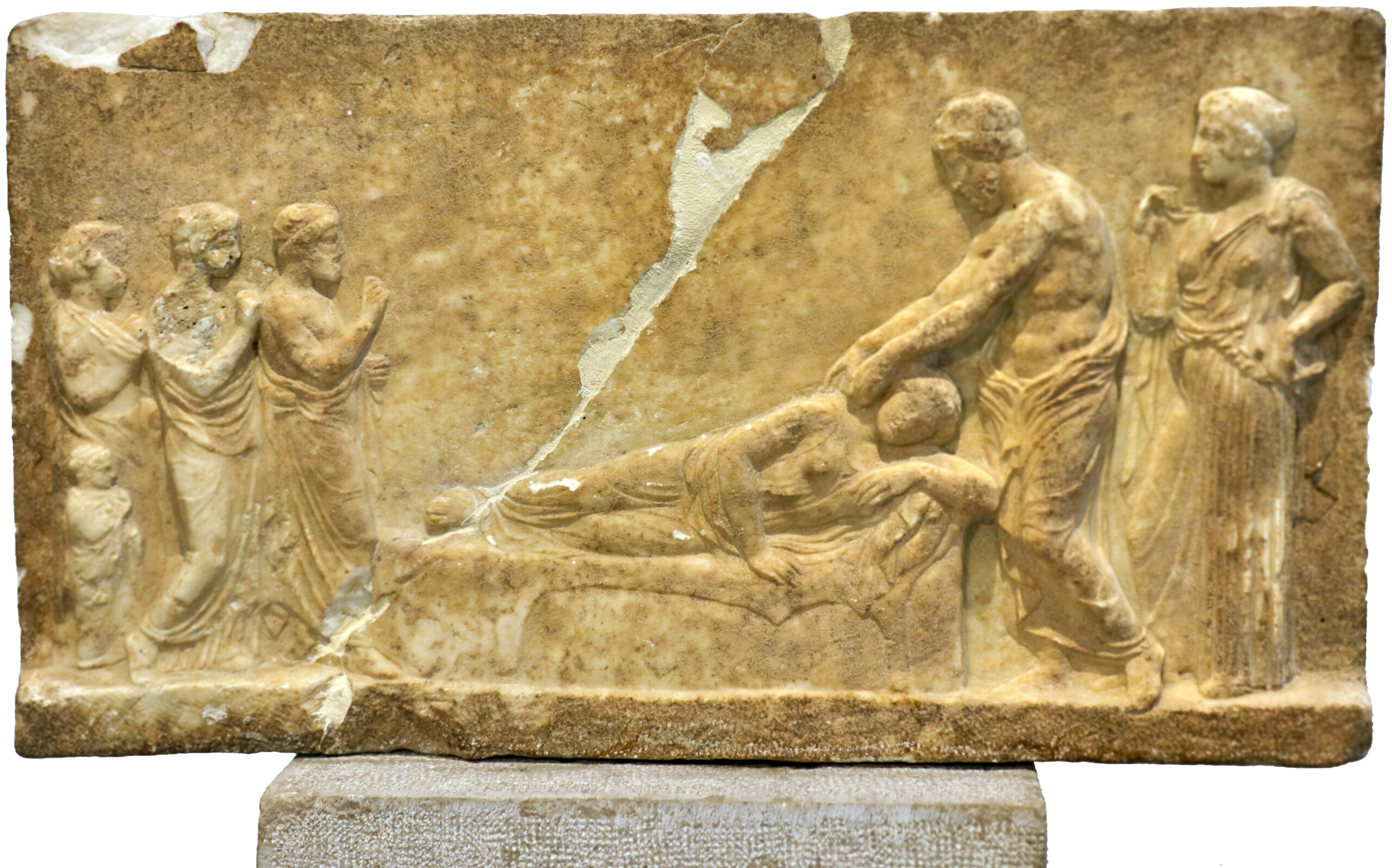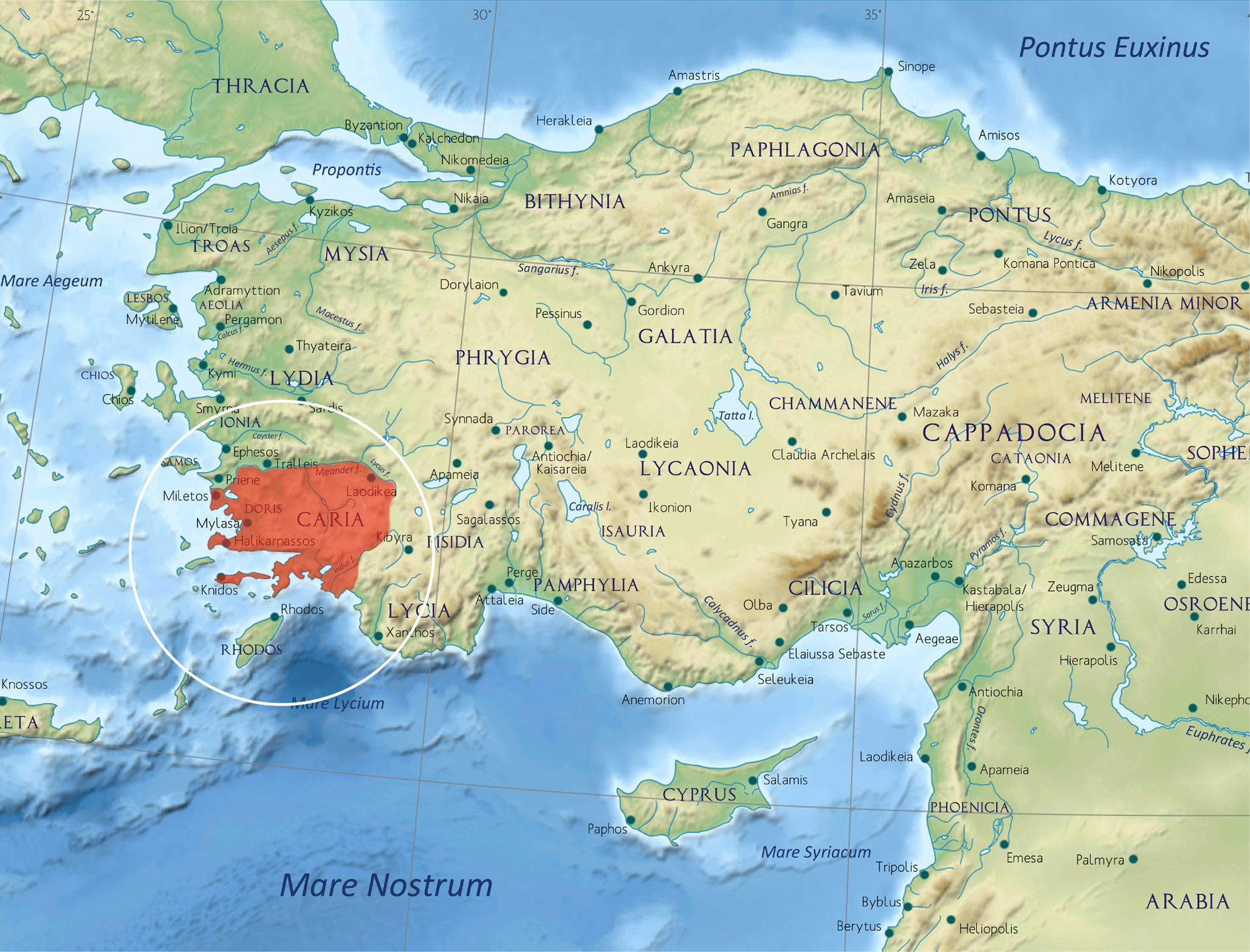
Figure 1. Asclepius, bending forward and extending his arms as he offers therapy to a woman lying on a couch. Behind him is Hygieia, goddess of health, while, opposite, the patient’s relatives plead for her recovery. A votive relief of Classical date, from the Asclepieion in Piraeus. © Archaeological Museum of Piraeus, 26th Ephorate of Prehistorical and Classical Antiquities.
Many people assumed that Asclepius was the God of Medicine and that her followers, the Asclepiads, were priests in temples and shrines called Asclepion. Asclepius and her daughter Hygeia who is known as goddess of hygiene are still the iconic names for modern medicine (Figure 1). However, as our knowledge deepened, it became possible to unravel the mystery of history, rewrite it realistically, and understand the role of human labor in this process.
The Asclepiads, as highlighted by Withington (1) were lay practitioners of medicine, first mentioned by Theopompus, who lived in the city of Syrnus in Caria (2, 3). According to George Bean (1903-1977), faculty member of the Department of Archeology at Istanbul University, Syrnus was located on the southwestern coast of Anatolia, near the base of a long narrow peninsula. It was called, the Knidos Peninsula in ancient times because, the city of Knidos was located here (Figure 2) (3) and Knidos became even more famous as the teaching center of the Asclepiads (2).
It is known that roots of modern medicine originated on the Kos Island of Greece and Knidos of Türkiye in 5th century BC (1, 2, 4). However, there is still limited data about Knidos medical school, and some of it is speculative and controversial. This brief note aimed to provide the most specific and reliable information by trying to stay away from speculative narratives.
Euryphon (5th century BC), before the time of Hippocrates founded the first important medical school in Knidos and initiated a tradition of medicine separating it from magic and mythology (5, 6). Euryphon is known as the first physician who indicated the important role of the diet in health (5). According to Euryphon, after inadequate digestion, the excrements from the abdomen are spread through the body, finally they reach the brain and result in illness. Euryphon’s second well-known proposal was the use of obstetric feces during common obstetric examination, as well as the use of vaginal fumigation as a method of diagnosis or treatment. His main diagnostic purpose was to determine whether the examinee female was able to conceive and give birth (6). Euryphon is also thought to introduce percussion of the lungs as a significant tool in physical examination to distinguish tympanic sounds from edema (1).
Galen referred to Knidian physicians about renal diseases, probably in reference to the book About Inner Sufferings, whose author is controversial; most investigators attribute it to the Knidian physicians, while others to Hippocrates (7). It is known that Hippocrates himself was familiar with the work of the Knidian physicians and a rival of Euryphon. The four renal diseases described in the book were nephrolithiasis with renal colic, and a disease corresponding to renal tuberculosis, a clinical entity resembling to either renal vein thrombosis or bilateral papillary necrosis, and chronic suppurative renal infection or a sexually transmitted urethritis, complicated by renal involvement. Treatment suggestions of Euryphon included diet modification, physical exercise, ingestion of herbal extracts and surgery, as a last resort (7).
Another significant physician of Knidos was Herodicus, who was a sports medicine doctor of his time, in medical school of Knidos (5). In his suggestions to the patients, he combined physical exercise and diet, may be the first time. He may be the first doctor that suggested patients start moving after an injury. It was suggested that Herodicus directly influenced the medical history by proposing the use of diet, training and physical activity (5).
The contributions of Euyphon and Herodicus have been better studied than those of some other physicians, such as Exoudos, Cstesas, and Chrysippus, whose name survives to this day (8). However, the historical roles of Exoudos, Cstesas, and Chrysippus, their relationship with Knidos, and their reflections on modern medicine deserve to be explored.
In conclusion, we owe the systematic approach to the classification of diseases, sports medicine and healthy living principles, starting from the 5th century BC to the physicians of Knidos. But still we need to learn a lot about this small corner of the Aegean Sea, where the modern medicine was born.
